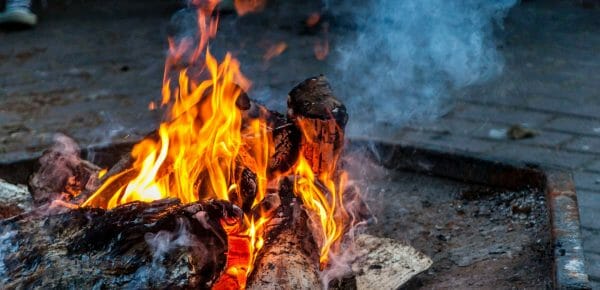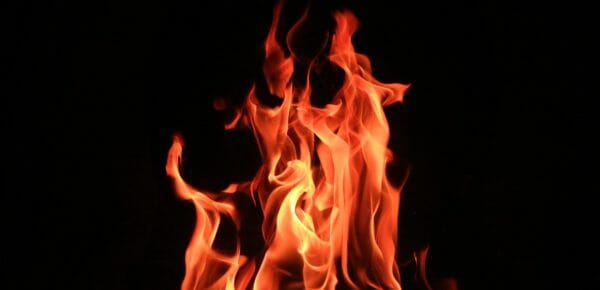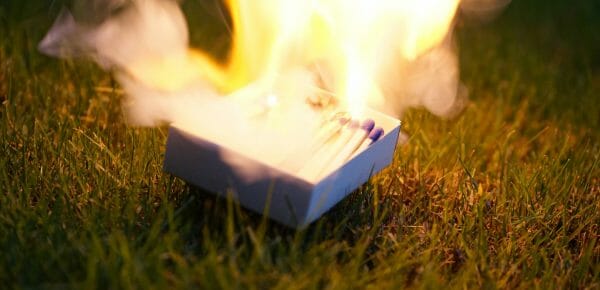Fire Retardants Inc. has assembled a comprehensive selection of fire retardant products for a wide variety of applications.Through our years of experience in supplying fire retardant paints, varnish and chemical treatments, we have compiled the needed product specifications, proven application techniques and laboratory test reports for the acceptance of these products under the demanding requirements established.
The following is a list (partial) of the products we carry and a brief description of each. Coatings identified as intumescent foam up two to three hundreds times the thickness applied when temperature nears combustion, forming a cellular layer of protective insulation. This extremely effective approach retards the spread of flames and smoke developed. The cellular layer greatly reduces the surface burning characteristics of combustible materials and retards the penetration of heat to the material surface.
If you need more detailed information on any of our products, or if a product for your particular application is not listed, please contact us.
INTUMESCENT PAINTS FIRE FIGHTING COATINGS
Few people know about the most recent advances made in making a PAINT a fire fighter. And there are several reasons. It’s a complicated subject. “Paint” is usually thought of first simply as “decorations”, rarely as part of fire protection. And fire-fighting paints are a very special kind. They cost more, and they rarely appear in the news. Consequently – many buildings superintendents, contractors, and even many experts such as fire marshals and building inspectors have yet to learn how well PAINT can function as a 24-hour fire-fighter.
But not just paint, of course! The key word to look for in the label is INTUMESCENT! That word marks a very special kind of fireretardant paint.
Just what does it mean?
It means that the paint does a lot more than simply decorate. At the first lick of a flame, the properly-coated surface that looks like any standard good quality paint job instantly starts to “intumescent” to swell, to bulge-up into a solid foam. A film six mils thick (about 2 cigarette papers) will swell up to make almost an inch thick layer of black foam. With the first hot flash, on any surface protected by Intumescent paint the coating acts like bread rising or beer foaming – but much faster and turns
into a protective blanket.
The puffed-up foam contains millions of tiny, closed, fire-resistant cells!
And this is what happens. The foam insulates It shields whatever is underneath to delay contact with the flames. The layer makes a barrier to retard the rapid heating up and ignition of the surface beneath.
Even when fire temperatures reach 1500-1700° F, the insulating shields stays on the job for up to an hour. The foam suppresses smoke. The foam retards fire spread. The foam postpones the ignition of properly-coated walls, ceilings, and roof or cellar timbers for anywhere from minutes to an hour, depending on fire intensity. And this delay of the fire’s prorogation can give precious TIME to reach safety.
But the fire-retarding foam does more than increase escape time. When a sprinkling system or firemen have extinguished the fire, the foam has done a lot to minimize damage If the fire hasn’t been too big or burned too long – the substrate may still be servicable In many instances, the dry charred foam can simply be scraped off – and the timber, stairwell or wall repainted. The substrate will still be sound. And the repair of fire damage can be a fraction of the cost – because the “intumescent” shield stayed on the job.
Let’s take a look at what happens when a fire breaks out. Then it will be easier to see how intumescent paint offers an extra margin of protection – to people and property. And especially, to see the most critical places where an intumescent paint should be used.
HERE’S WHAT HAPPENS WHEN A FIRE BREAKS OUT
Fires break out for scores of reasons. They are caused by adults’ carelessness with cigarettes, children’s playing with lighters or matches, electrical short-circuits, lightning, over-heated furnaces, cook stove accidents, combustible gas or vapors ignited by the spark of a light switch or a refrigerator cut-off, spontaneous combustion of oily rags or paper stacks and dozens more. Whatever the cause of building fires, they have two things in common: they are “unexpected”, and their progression to total destruction follows a similar pattern.
Highly qualified experts have studied building fires exhaustively and here is what they have found happens.
When a fire starts by accident, somewhere in a building, – four events take place one after the other: ignition, spread, flashover, total combustion. The first event is ignition. The starting fire can be quite a small blaze to begin with, igniting from any of a score of causes in a room, cellar, attic or wall space. Once ignition takes place – unless controlled -the other three events take place in the following order.
The second event is flamespread. This takes the form of rapidly crawling fire tongues that lick across the surface of walls, ceilings, floors or supporting timbers. What governs the speed and intensity of flamespread is the character of the surface and its evolution of gas – whether substrate itself is combustible or not. The travel rate of flamespread can be as high as 20feet per second depending upon the surface combustibility of the substrate. The air in the vicinity gets super heated, toxic gases are released, oxygen is used up and yet another element enters the destruction: a large amount of radiant heat.
Adjacent combustible materials – wood, wallboard, surface coatings – ahead of the spreading tongues heat up and the flames lick further, spreading over a constantly wider area. As the flame spread progresses, the heated-up subsurfaces release great volumes of violate gases into the air. When this mixture of gas and air reaches a critical proportion – it ignites. The result is “flash over”. What happens is a great belch of fire, sometimes reaching the proportions of explosion. Most usually, a sudden searing stab of flame flashes from the area of burning, reaching far beyond. This “flashover” instantly uses up most of the surrounding oxygen and can shoot the premise temperature up to over 1000°F.
Flashover – the combination of super heated air, depleted oxygen and sudden evolution of toxic gases is often the chief culprit for so many deaths in building fires. It is an awesome phenomenon!
If you watched a building fire, you may have seen it. It is the hollow, thunderous “poof” that blows glass from the window frames, sends tongues of flame flashing out every opening. You can often see it in miniature in a fireplace – when a slowly burning log suddenly shoots a flame across its surface arid a bright flash fills the hearth. In a building fire – you will see it happen once, at a certain point in the fire’s growth, and it is the prelude to the steady roaring total combustion. Flashover is the sudden transition from localized burning to an engulfing, premise enveloping fire. The aftermath is usually a steady burning, the rate depending upon the amount of available draft, that ends in total destruction.
The final event in the burning sequence is this firey consumption of the substrate itself as it steadily burns to ash.The rate of destruction depends upon the amount of air reaching the burning area and the combustibility of the fully-ignited substrate. This, then, is what happens in building fires. And this sequence illustrates why and how intumescent paints can help save life and minimize property damage.
A BLANKET OF INSULATION
Intumescent coatings start turning to insulating foam at a temperature of 300°F – less than a hundred degrees higher than boiling water. The heat sensitive ingredients in the smooth coating react and froth up into a foam containing millions of tiny hollow cells. The expansion incredibly rapid. What was once a smooth, decorative surface turns into a thick protective layer of insulation.
The insulating foam keeps substrates from rapidly heating up to evolve gas and thus flashover – the destructive event that often puts fire “out of control” – may be prevented or greatly postponed. The frothed mass impedes flamespread and thus holds down smoke and evolution of radiant heat. And, in short, the fire-fighting foam delays rapid spread of flame and onset of total burning. It forestalls rapid build-up of intense heat, heavy smoke and evolution of combustible gases.
In a number of fire tests, it has been found this 3-way protective action has been a major factor in keeping a fire within bounds until it could be extinguished. In actual fire, intumescent paints can minimize property damage. And most important – delay of flamespread and total burning can provide precious time – an added margin of safety for building occupants.
WHERE INTUMESCENT PAINTS HELP INCREASE BUILDING FIRE SAFETY
The National Fire Protection Association’s LIFE SAFETY CODE #101 stipulates the minimum flamespread ratings admissible for walls, ceilings and floors in various parts and kinds of buildings. It specifies the degree of fire safety to be provided for various kinds of occupancy. Local building codes sometimes duplicate and nearly always reflect the fire protection guidance of these national codes. Materials are thus categorized from Class A (Flame Spread 0-25) to Class E (Flame Spread over 500). In the construction of new buildings, architects and contractors are guided by local building codes and conformance to established fire safety standards is relatively straight forward. However,a major problem frequently occurs with existing buildings, when learning from experience, a local fire code is tightened or an altogether new code is put into effect.
It is significant that the N.F.P.A. LIFE SAFETY CODE #101 recognizes that intumescent paints can be effective for increasing the fire safety of established buildings. In Section 6-2121 the Codes States: “In existing buildings the required flamespread classification of interior surfaces may be secured by applying approved fire retardant paints or solutions to existing internal surfaces have a higher flame spread rating than permitted.”
An intumescent paint applied at the manufacturer’s recommended rate can make it possible to comply with a flamespread rating lower than what exists on an already-installed wall, ceiling or other surface. The flamespread rating is shown on the label of the can. Intumescent paints can give an extra measure of fire protection to property and people. Architects, developers, building superintendents and home owners can use this simple safeguard in a number of strategic ways:
1. As a fire retarding coating on roof timbers, floor rafters and support members.
2. To protect corridors, stair wells between stories, and exits from buildings.
3. On dividing walls around space heaters, furnaces, or heating plants in basements or compartmented in living areas.
4. In working areas of a factory or process plant exposed to gas or oil-fired heaters, welding or brazing operations, handling of combustible materials
HOW TO SELECT AN INTUMESCENT PAINT
Fire fighting coatings come in a broad range of colors. Leading paint manufacturers offer their special brands of intumescent paint – with specified flamespread, smoke evolution ratings,coverage required, and other properties such as resistance to leaching. (This last is highly important, for example, in hospitals where frequent scrubbing is necessary.)
It is quite a simple matter to select an intumescent paint for whatever its intended use.
Flamespread ratings are determined by the Method of Test of Surface Burning Characteristics of Building Materials (N.F.P.A. 255, ’72). In general, the lower the “Flamespread Rating” (when coating is applied at the specified rate) the greater the fireretarding power. The lowest flamespread coatings, with ratings from 0-25, are best in this regard, and are grouped as “Class A” materials.
Fire retardant coatings are subject to Underwriters Laboratory testing, rating and listing. Their test for evaluation is UL-723; it covers flamespread (using the N.F.P.A. 255 method), smoke generated and fuel contributed; the ratings are published in the UL’s annual listings. Frequently, this U.L. rating is printed on the label and/or supplied by the paint maker as printed specifications.
The Federal government recognizes the protection value of intumescent paints for safeguarding property paid for by taxpayers. The General Services Administration specifies the performance required on the basis of fire retardance, scrub and leaching resistance. (G.S.A. TTP-1932).
Aside from aesthetics, an intumescent paint can be selected on the basis of coverage (sq. ft./gallon), film thickness required for a given flamespread rating, choice of 1 or 2 coat system,scrubbability (where abrasion is critical), and resistance to leaching (for frequent washing).
In applying an intumescent paint – whether by brush, spray or roller – the film thickness is highly important. To obtain the specified maximum protection from a particular formulation – the maker’s directions for application must be followed.
WHAT AN INTUMESCENT PAINT WILL DO IN CASE OF FIRE
A fire fighting coating can be worth hundreds of times its cost in minimizing premise damage in the event of fire. And the value cannot be calculated when the “paint” contains or delays fire spread long enough to save human life.
When fire breaks out, whatever the source, in an area with surfaces properly coated with intumescent paint – here are the benefits it delivers that a conventional paint cannot:
Upon first encroachment of the source flame, the film (at only 3000) foams up as much as 200 times its thickness to make a continuous insulating foam composed of tiny closed cells.
The greatly expanded cellular foam delays the lateral spread of fire and helps protect the substrate beneath it. Occupant escape time is prolonged; destruction of property is delayed, reduced or avoided; restoration costs are minimized.
On properly coated surfaces, the generation of combustible gasses and high temperatures that lead to flashover and the creation of lethal atmospheres is delayed or prevented.
The thick, tightly-adhered foam coating thermally insulates the substrate walls, ceiling, or support member from excessive heat, thus postponing ignition.
The insulation maintains the protection of the substrate for as long as hours, often long enough to prevent actual ignition.
Even in severe fires that have been brought under control in reasonable time, the substrate wall, ceiling, support timber may often be scraped clean and found to be still in servicable condition.
Intumescent paints are not designed to prevent fires. They are designed to keep damage to a minimum and to “buy time” until help can arrive.



